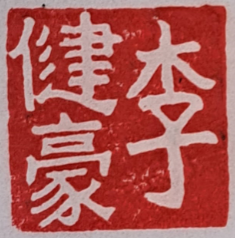By the time the R train spits me out on 53rd Street, it is way past sunset, and I make my way to the main avenue, long shadows falling across residential buildings and the growing presence of signs (largely in simplified Chinese).. Weeks later, I stumble across a post from a city archivist that made me wish I’d taken the train in the day instead, so that I could pay attention to how daylight emerges when the subway pulls into 8th Avenue, after it first turns left after Brooklyn’s 59th Street before slipping beneath 4th Avenue again. For the Chinese families that sought to escape an increasingly claustrophobic and expensive Chinatown in Manhattan, Sunset Park was a short commute away; for those still unaccustomed to English, spoken and written, what better tell that one had arrived home than to “look for the blue sky”, as the neighborhood’s early residents would tell new arrivals?1
Manhattan’s Chinatown does little to dispel the association that Cantonese is a crowded language, not just packed full of syllables, as my ears keep pace with words that shift into tones far exceeding Mandarin, but the idea that the language is one of a jam-packed urbanity, bouncing through Hong Kong’s alleys or the throngs on Mott Street’s sidewalks. In the few minutes it takes to approach Sunset Park I hear Cantonese, too, but also plenty of Mandarin and Fujianese. I am not surprised that amongst the teenagers cutting through the park to head home, I hear the sounds of English instead.
Fuzhounese cuisine is a bit of an odd thing. Sunset Park is lined with restaurants selling them. It is not the little platters and steamer baskets of Cantonese cuisine, or dim sum that have come to be associated with its restaurant culture, or the impressive, heavy Sichuanese fare whose popularity in the mainland is now reflected overseas, but far simpler dishes of vermicelli in soup. There are little shops (I’d call them ‘provision stores’ in Singapore, perhaps some colonial term pressed haphazardly to explain the petty commerce of my streets) selling everything from offering paper to be burnt to dead ancestors to candied haw flakes and dozens of different types of dried mushrooms, dried scallops, dried swallow’s spit, dried wolfberries for tonic soups to be drunk while sick, and plenty of fresh produce. But what catches my attention is a stall at the end. I smell it even through the chilly air of a late winter: thick, briny dough and the sizzle of a deep fryer at work, not the smoky grills of a Xinjiang-style skewer cart on Grand Street or the ovens of Taishanese bakeries.
They literally translate to ‘Fuzhou Oyster Cake/Biscuit’, these fist-sized, UFO-shaped fritters, crispy on the edges but soft, spongy dough that reveal oysters and ingredients of regional variety: usually pork, peanuts, sometimes seaweed and shrimp. I must be visibly excited, because the owner asks me if I’ve seen them before. Here there is no pretense of opening the conversation English. I learn that he is from Changle, a neighbouring town to my mum’s (Fuqing), both small compared to the capital city where most of the Fujianese in New York hail from. I cannot tell you much about the cuisine of Changle, because like I’ve said, all I’ve learnt from my mother about the place is that it’s filled with gangsters and crooks, she says. But an oyster cake is an oyster cake: only two places are left selling these in Singapore, within the hawker centres used by the state to consolidate street food vendors, and if there is a food I am sure is about to go extinct, that would be it.
I’ve joked that the joys of being a flâneur should not just be about the wandering, the noticing, the strolling. (I am reminded of a sign I see once in the Lower East Side, a mashup of French and Italian: ‘’Alimentari Flâneur). The joy of biting into a food reminiscent of my childhood and yet different must be one you know. The seller tries to give me one of these cakes for free, but I insist on paying. At $2 a piece, these are even cheaper than what they’d be back in my home.
I bite into one with relish. The taste is good, but they’ve already gone cold.
- Kirkeby, Marc. “Sunset Park: The Blue-Sky Line.” NYC Department of Records & Information Services, March 2, 2017. https://www.archives.nyc/blog/2017/3/2/sunset-park-the-blue-sky-line. ↩︎

Leave a Reply